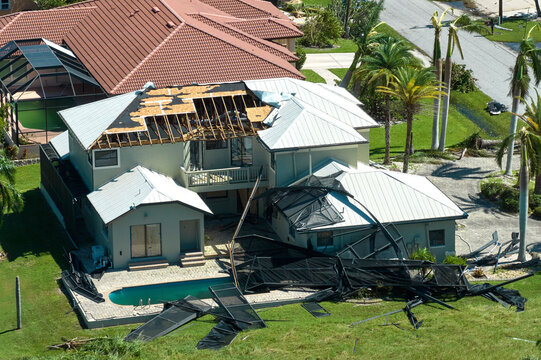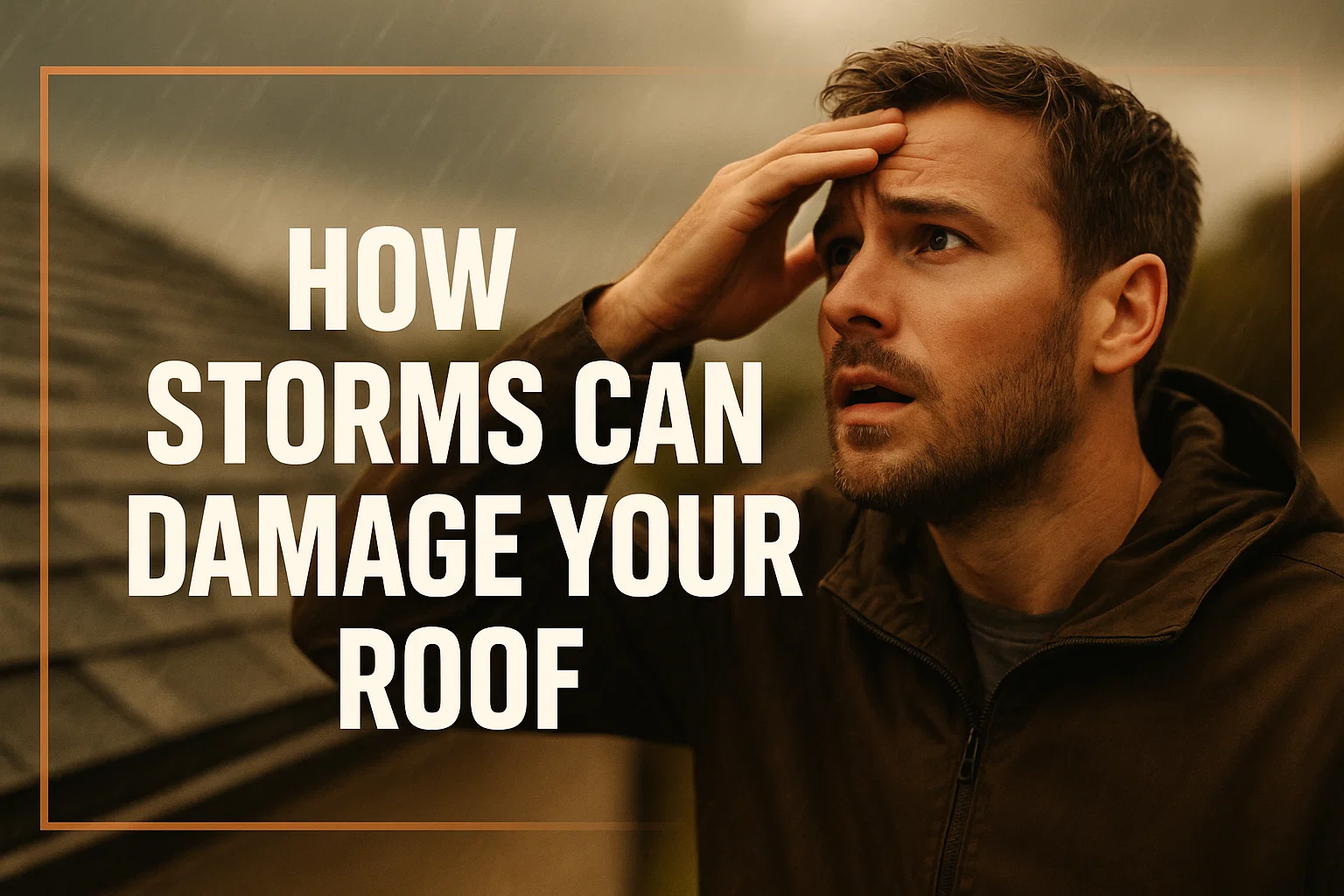How Storms Can Damage Your Roof
The roof is one of the most important elements in your home, and storms can damage it easily. From high winds to hail and driving rains, various elements of a storm can compromise the structural integrity of your roof and cause costly repairs if not tackled head on. Knowing what storms can do to your roof and being able to recognize signs of damage, though, can make all the difference in getting you prepared so that when they pass through you can act fast to save yourself headaches and keep from needing a new roof. This guide describes common types of storm damage and provides tips on how to protect your roof before a storm hits, as well as what you can do after the winds have died down.
Understanding Storm Damage to Your Roof
Your roof can take a beating during storms from forces such as high wind, hail, heavy rain and snow. This damage compromises the strength of your roof to protect your home which often results in leaks, structural issues and expensive repairs if not addressed.
Wind Damage
- The powerful winds create uplift forces which lift the shingles off or pull them up from your roof.
- The higher pressure, the edges and corners of the roof is very vulnerable.
- Lifting can pry apart membranes, or disengage mechanical fasteners to cause further tearing.
- Results show that the speed of the wind is a major factor in damage level, with speeds greater than 50 mph leading to serious loss of shingles.
- Flying debris can tear into roofing membranes and flashing, as well as dent gutters or vents.
- Roofing material will start to deteriorate due to repeated pounding of the wind.
Hail Damage
- The Impact of Hail : Dents and tears roofing material and removes protective granules from asphalt shingles.
- As the shingles lose more granules, UV degradation accelerates so that the more they lose, the faster aging and cracking will occur.
- Impact can chip or crack tiles, which leads to water getting inside.
- The larger lumps of hailstones create more extensive damage, which can penetrate surfaces.
- Hail damage is not always noticed until it becomes visible or leaks.
Water Damage
- When it rains, water enters between shingles if the latter is missing or broken.
- Drainage problems and obstructed gutters cause water buildup and penetration.
- Moisture seeps through deck boards, resulting in wood rot, mold growth and damage to the insulation where your home needs it most.
- Leaks in walls/ceilings due to moisture between shingles/flashing.
- Extended exposure to water can weaken the roof’s structure and security.
Snow and Ice Damage
- Physical snow weight adds stress to the chassis and can cause it to bend or crack.
- In this process, ice dams develop at the eaves and prevent the escape of water, which then backs up under shingles.
- Cycles of freezing and thawing puts pressure on roof material forming radishes.
- Melting snow can also introduce damp conditions perfect for mold and rot.
- Icicles and ice buildup can also ruin gutters and downspouts, leading to drainage problems.
Impact Damage from Debris
- In wind storms branches break and projectile debris hitting the roof can happen.
- Damage from impact makes punctures, cracks, holes or broken shingles.
- The secondary effects are leakage and early aging.
- In fact, impact from debris is typically obscured by leaves or dust until it starts leaking.
- Post-storm inspections also help to spot hidden damage early.
In general, storm damage will undermine the integrity of your roof and shorten its overall lifespan as well as your wallet if left untreated. When you have your roof inspected and repaired by industry experts, you’re protecting your home from storm damage.
Effects of Storm Damage

When a big storm passes through, the last thing you want to worry about is your roof. If your home sustains damage during or after a severe storm, don’t leave anything to chance! Water leaks can cause damage to ceilings, walls and insulation, while sustained moisture can lead to mold and structural rot.
Timely, accurate assessments following storms are essential to assess damage quickly and figure out what repairs will be needed. The reality is that neglecting roof storm damage can be costly, turn into larger issues, and require very expensive repairs in the future.
| Type of Damage | Description |
| Wind Damage | Shingles lifted or torn off by strong winds |
| Hail Damage | Dents, cracks, or granule loss from hailstones |
| Water Damage | Leaks caused by missing or damaged shingles |
| Impact Damage | Cracks or holes from falling branches or debris |
| Ice Dam Damage | Water backup and leaks due to ice buildup |
| Snow Load Damage | Structural stress from heavy snow |
| Flashing Damage | Bent or broken flashing around roof edges |
How to Evaluate Roofing Damage After a Storm
A storm just blew through known for gusting winds and heavy rains– you suspect your roof has seen better days.
- Prioritize Safety
Before you conduct any inspection, make sure the area is free of hazards – including downed power lines, broken tree limbs and precarious sections of roof. Do not walk on the roof until told it is safe by trained professionals.
- Begin With Ground-Level Observations
Scan your roof from the ground with binoculars. Check for absent, cracked or curled shingles. Inspect metal flashing, gutters and vents for dents resulting from hail or storm damage. Also, check for debris or signs of sagging.
- Inspect Gutters and Downspouts
Examine gutters for granules shed by the shingles a sign that they are wearing, or have been struck by hail. Ensure gutters are firmly affixed, clear from blockages and not damaged so rain water can run off.
- Examine Flashing and Roof Valleys
Flashing protects around chimneys, vents and skylights. Inspect flashing for bends, looseness and missing pieces that may result in leaking. Vulnerability in the Valley Roof valleys, in particular, are low spots where water runoff collects, so make sure there’s no cracked or missing shingles and broken or misssing flashing.
- Look to Your Attic and Interior Ceiling
Search for water damage, either from mold and puddles or signs of leaks, where your attic meets the ceiling and in other parts of your walls. These are also represent potential concealed roof damage.
- Check It Over More Closely with Advanced Tools
Professionals might consider using drones for hard-to-reach locations; infrared cameras to determine any moisture located under shingles; or perform hail impact testing on a portion of the roof.
- Document All Damage
Document all findings with photos and descriptions to help facilitate insurance claims and the following repair planning. Include wide shots for context and close-ups for the damage.
- Get a Professional Opinion With a Licensed Expert
Homeowners may inspect the damage, but a qualified roofing contractor or inspector can conduct a thorough inspection to determine the severity of the damage, roof integrity and offer advice on repair or replacement options.
Hiring Storm Damage Roofing Services
The right contractor is key to having a sound roof, post-storm. Here’s a concise guide:
- Check for Professional Credentials: Make sure the contractor is licensed, bonded and has insurance for your own protection and professionalism.
- Experience Matters: Due to the fact that in some markets there will be hundreds of people with a hammer and a trailer, but very few can respond from thousands of miles away. Make sure he has some experience doing storm damage work and also make sure they do understand the local codes.
- Check References: Always request for customer references and even online reviews to establish a reliable background or quality of work.
- Get Written Quotes: Make sure you have in-hand, detailed estimates including costs, materials and timing; stay away from quotes requiring vague or full payments upfront.
- Local and Reputable: Better to do business with local, renown contractors than flimsy storm chasers.
- Insurance Assistance: Choose contractors who help with insurance paperwork and claims.
- Warranties: Check for warranties on both materials and work to give you peace of mind over the long term.
- Certification: Opt for a certified contractor with industry leaders such as GAF or Owens Corning to ensure quality work.
Conclusion:
Your first line of defense in protecting the rest of your home is a strong roof. After a storm, taking proper measures to assess, repair, and restore your roof will prevent more significant damages leading to expensive repairs. Furthermore, for all of your roofing needs, there is only one solution – Down to Earth Roofing. Our roofing company is built on the firm foundations of quality workmanship, open communication, and ensuring that your roof remains firm throughout the storm.
Frequently Asked Questions:
When Should I Inspect My Roof After A Storm?
Always inspect your roof as soon as it safe to prevent more damages to occur.
Can I Repair the Storm Damage Myself?
You might be able to make tools repairs, but professional assessments ensure safety and quality.
Will My Insurance Plan Cover the Roof Repair Cost?
Most homeowner policies cover storm damage, but checks your policy and file promptly.
When Is Time to Repair and Replace the Roof?
A properly licensed professional can determine the extent of the damage and the best course of action.
How Long Will Repairs Take?
The repair can repair vary between a few days and a couple of weeks depending on the damage.
What Is the Most Durable Material Available?
The impact-resistant shingles, metal roofs, and proper installation enhance durability.
Can Roof Damage Be Prevented?
Regular inspections and maintenance, along with reinforcing vulnerable areas, minimize damage risks.


